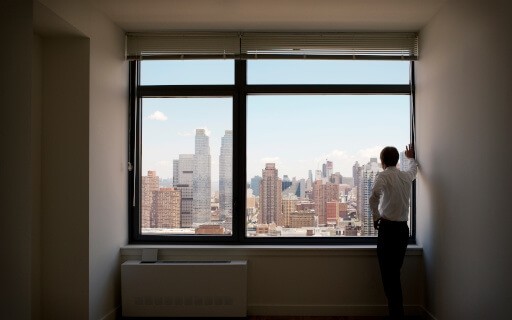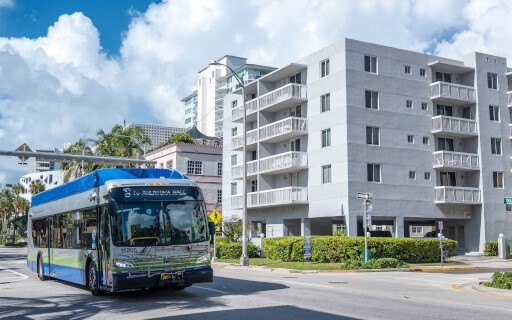Congratulations, you’ve filled another vacancy at your rental property! Although you no longer have to worry about listing your property online or screening a potential tenant, there are still many things you need to get done before move-in day. If you’re not strategic, move-in day could get hectic.
Why Should I Use a Landlord-Tenant Checklist?
Getting the lease signed and making repairs are just two of the many tasks that need to be completed before your tenant can move in. Similar to a walk-through checklist, using a landlord-tenant checklist can help you stay organized and complete everything that needs to be done in a timely manner. Here is a checklist with tasks to complete to ensure move-in day is less stressful.
1. Set a Move-Out Date with Current Tenant
Knowing when your current tenant is moving out of a unit is essential. You must know what day and time your tenants are moving out so you know when to begin repairs. It’s also important to communicate with tenants about move-out dates so you aren’t left with a vacant rental property for months. The longer you have a vacancy, the less income you earn. Requiring your tenant to provide a 60-day notice of non-renewal will help you avoid this problem and give you more time to plan for making repairs or completing any renovations.
2. Complete Final Walk-Through
Depending on local laws, you might be required to complete a property inspection before a new tenant can move in and after a former tenant moves out. During the move-out walk-through, be sure to document the condition of each room along with any wear and tear or damages present in the unit. Be sure to take photos and videos to capture the condition of the property. Photos and videos can help illustrate why a portion of a security deposit was withheld.
3. Determine a Move-In Date with New Tenants
As soon as you are aware of when your old tenants are moving out, communicate to your new tenants what time they can begin moving in. Specifying a move-in time ensures you can get the time needed to complete repairs and renovations.
4. Get the Rental Move-In Ready
You want to make a great first impression with your new tenants, so this step is very important. As soon as your former tenant moves out, you should begin making the unit move-in ready. This includes fixing any damage, completing renovations, adding a fresh coat of paint, changing HVAC filters, and re-keying the locks. If you’re willing to spend the extra money, you can also use this time to hire a professional cleaning service to clean the unit. Remember if there are any damages that are beyond normal wear and tear, you can deduct the cost of repair from the security deposit.
5. Check Smoke and Monoxide Detectors and HVAC System
As a landlord, it’s important to take precautions to protect your tenants and avoid liability. Depending on local and state laws, you could be required to have a working smoke and carbon monoxide detectors. Similarly, you’re legally required to have a functioning HVAC system so make sure your heating, air conditioning, and ventilation are working properly.
6. Send Security Deposit to Former Tenants
If you discover something is damaged, calculate how much the repairs will cost and subtract the amount from the security deposit. If you are deducting anything, provide the previous tenants with an itemized list and a receipt to justify your deductions from the deposit.
7. Sign the Lease
Signing a lease is one of the most important steps on the checklist. As a legally binding agreement, it details the terms all parties agree to, including any rules you might have for your rental property. There’s an easier way to create lease agreements. Just use Apartments.com! With our Rental Tools platform, you can easily create a lease that fits your property and your standards. Our fully customizable lease agreements are state-specific and legally binding, meaning you can create a lease no matter where your property is located, and it will adhere to all state laws and local ordinances. Once your lease is created, your tenants can quickly sign online. No more hand-delivering paper leases and then trying to find a place to store them! Since the lease includes rent price, the deposit amount, and fees, it’s important to get your new tenant to sign before they give you any money.
8. Collect First Month’s Rent, Security Deposit, and Other Fees
After the lease is signed, you can collect the first month’s rent, the security deposit, and any other fees you require before move in. Make sure that the form of payment goes through before providing keys because it can be difficult to evict tenants once they move in. It’s illegal in some cities to have rent and deposits in one account (this is because a deposit is meant to be returned to the tenant), so be sure to check up on your local laws.
9. Complete a Move-In Inspection with New Tenants
Similar to the final walk-through, you should take photos and video of the unit before the new tenant moves in to document its condition. Have your tenant complete a walk-through checklist for them to document the condition, sign off on it if you agree with everything listed, and keep a copy for your records.
10. Welcome New Tenants
Along with providing a clean unit, properly welcoming your new tenants into their new space will influence your tenant-landlord relationship. Providing a welcome letter will not only help them feel at home, but also provides important information about living in your rental property. Your welcome letter can include:
- How to set up utilities
- How to pay rent
- How to report maintenance issues
- How to replace lost keys
- Parking information
- Trash disposal
- Contact information
- Community expectations
- Nearby restaurants and stores
If you want to go the extra mile, you can also provide a welcome package or host a small mixer for new tenants every few months.
Tips for 24-Hour Turnaround
It’s not uncommon for landlords to have tenants moving in and moving out on the same day. What can you do to ease this stressful situation? Reach out to your current tenants and communicate to them that they need to be moved out by a certain time. You should also tell them where to leave their keys and set a time for a final walk-through. Although it’s very common, you don’t have to conduct the final walk-through with the tenant. Instead you can have them complete a tenant move-out checklist that you can sign off on later. You should also set a time for your new tenants to move in. Use the block between the move-out and move-in times to conduct any quick repairs. In a worst-case scenario, if you can’t complete all the repairs in time, let your new tenant know that everything will be fixed within the next few days.
If completing repairs on the day of move-in seems too risky, you can also regularly inspect the premises to keep an eye out for serious damages. You can include a clause in your lease to let tenants know about these inspections, just make sure you aren’t impeding on your tenant’s right to “quiet enjoyment.”
Retaining Your New Tenants
One of the easiest ways to ensure your rental property is profitable is tenant retention. Allowing pets, answering maintenance requests quickly, and requiring quiet hours could lead to lease renewals.
You might have discovered throughout your landlord journey that organization is the key to owning a successful property. Using a landlord-tenant checklist can help alleviate the stress of moving tenants in and out. Good luck!











